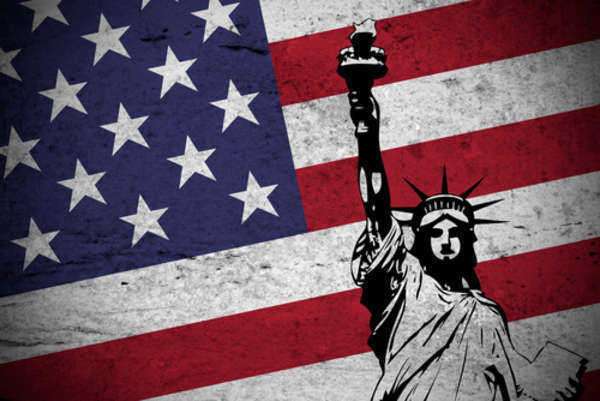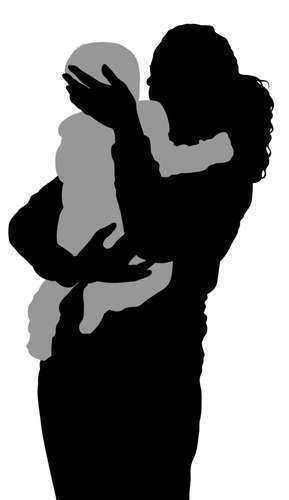Adoption Statistics

Some information on adoption in the United States has been the result of opinions/personal satisfaction ratings of parents who had gone through the adoption process at least once before. Adoptive parents are most likely to be motivated to want to adopt so they can give children a permanent home or to start/add to a family and are most likely to look outside child welfare programs if they seek an infant child to adopt.
Overall, most adopters rate their experience to be quite favorable, citing a good rapport with their agency and feelings of warmth and closeness with their children as major reasons for thinking this way.
Country-wide Trends
National trends in domestic adoption may be hard to analyze due to the impracticality of analyzing many types of private agency. Using the period from 1996 to 2002 as the basis of its interpretation of data, the National Council For Adoption identified some significant upward swings in certain classes of adoption.
In that time, both the rates of domestic and international adoption went up, and sizable increases were reported in the United States for adoptions of children with disabilities and other special needs.
International Statistics
Though some might argue we in the United States should have a better handle on our domestic adoption numbers as compared to our tallies of international adoption, to be fair, the latter is mediated by third parties. In applying for adoption, prospective adoptive parents must petition for their children to obtain visa documentation via the Department of State and apply for naturalization through U.S. Citizenship and Immigration Services, and those statistics are recorded and reported each year.
Right down to the State and region in which an adoptee is settled, this information can be presented in a logical manner. In terms of individual states, adoption rates have been greatest for California and New York, whereas central America (especially around the Great Lakes area) is the area with the highest population density.
With the patterns of migrations to specific parts of the country, the ranks have more or less remained unchanged. For the most part, so too have the sources of child adoption been remarkably consistent.
China, Russia, Ethiopia, Guatemala, and South Korea have been major contributors to the international adoption scene in America, though recently, the latter two have either already shut down their adoption operations or are looking at closing off adoption almost entirely to foreign nationals. Absolute numbers of intercountry adoptions to the United States have dipped in the past five years.
Meanwhile, gender-oriented differences in intercountry adoption have been consistently less pronounced, with China’s proclivity towards approving females for adoption over males being a notable exception (especially since China is the biggest “exporter” of children to America).
Public
Public adoption is often easier for prospective adoptive parents to manage given the lower costs and subsidies that may be available for children through community channels, and calculating statistics on public adoption is easier with this form of domestic adoption being almost exclusively handled by State-funded public adoption agencies and placing children from foster care and child welfare programs.
With the actualization of the Adoption Incentives Program through the Adoption and Safe Families Act of 1997, even justifying the termination of parents’ rights to custody of their children in cases of being poor providers has gotten easier, with State governments assenting to more public adoptions as a means of reaping the namesake economic incentives.
There has been a definite ebb and flow to rates of public adoption in the United States, though. Whereas once public adoption was the majority, more and more private domestic adoptions (be they through agencies or outside of agencies as part of a mutual contractual agreement) have cut into that dominance and have actually overcome it in absolute numbers.
Nevertheless, over a third of all adoptions applied for by Americans are still arranged for through foster care, with over two-thirds of eventual parents previously being parents through foster care. A majority of these adoptive parents head low-income households, though this does not imply they cannot be good parents.
Private
Public and private adoption would seem to be polar opposites based on the fact their names are antonyms, and in essence, they are. Public adoption is roughly equivalent to State foster care systems and private adoption is generally conceived as every type of adoption other than foster care adoption.
Interestingly enough, though, private agency services may be used for both private adoptions and (to a limited, supplemental extent) public agency adoptions. In addition, the percentages of these adoption types out of the total number of adoptions at the behest of U.S. citizens are separated by one percentage point (as of 2007, roughly 38% for private; 37% for public).
Just the same, it cannot be denied that the differences between private and public adoption outnumber the similarities. For one, relatives (through private independent adoptions) are much more likely to solicit private avenues for adoption than to enlist the services of public adoption agencies/foster care. There are disparities, as well, in the rates of infant adoption for both adoption routes.
With private adoption in particular, over 60% of placements are for children one month of age or younger. Additionally, private adoptions are decidedly more conducive to open adoption (i.e. continued contact with birth parents) in both pre-adoption agreements and post-adoption practice.
Step-Parent
Depending on how one operationally defines the term “step-parent”, the statistics a study yields can be radically different and can err on both the side of exclusion and inclusion. First, step-parent adoption must be recognized as its own form of adoption separate from adoption as a whole.
Second, step-parent adoption must be distinguished from the more general “step-parenthood” umbrella which does not have to include adoption (in some cultures, they might not see a need for the formality of it all).
Third, step-parenthood must be extracted from those situations in which it was wrongfully combined with other special circumstances. Lastly, examples of step-parenthood must be considered that are not necessarily the result of a birth mother remarrying.
However, until the above parameters are met, results will have to be weighed alongside their limitations. Some statistics-oriented organizations would insist that step-parent adoption is the most common form of adoption in the United States, though they may simply be treating adoptive parents who are not birth parents as “step-parents.”
Other researchers would insist that step-parent adoption accounts for a much lower rate of adoption in this country, especially when marriage and not just informal domestic relationships are considered. Then again, some of their analysis are just single studies with small sample sizes, so it can be difficult to generalize this data.
Familial
Kinship adoption may realistically be a win-win for children and adults, which may explain why it is so common (aside from the obvious feelings of familial sympathy and obligation).
Even when he or she never lived with his or her original birth parents – which, by Department of Health and Human Services estimates is about 1 in 4 children – relatives may still volunteer to furnish a home for their sibling’s/cousin’s/etc.’s offspring. In any event, family members are more likely than non-relatives to adopt children within the United States, constituting 40% of all adoptive parents.
Interracial
Interracial adoption may often manifest itself in the form of international adoption.
Intercountry
As the United States is home to the most immigrants on the face of the Earth, so too is it a leader in adoptees, a subset of that population. Between 10,000 and 20,000 children are adopted by American nationals from foreign nations each year, and international adoptions comprise as much as a quarter of all adoptions in the United States.
Despite periods of decline in the number of intercountry adoptions over the past four decades, though, numbers of intercountry adoptions resulting in immigration to America are easily more than double and triple the rates of other major countries on the world stage.
Whereas international adoptions to the United States eclipsed the 100,000-child mark for the period of 2002 to 2008, the United Kingdom could not even break 2,500, let alone 100,000 children, and Australia managed comparatively paltry numbers of 400 to 500 children per year in the same time frame. Italy managed scarcely over 3,000 adoptees per annum at points in this block of time, and largely due to strict domestic adoption policies within.
Special Needs Adoption
With frequent publicity on special needs adoption, it may be that more people are endorsing the practice than actually committing to reforming it or helping matters by volunteering to adopt children from this population themselves. After all, special needs adoption is one thing to contemplate in an abstract sense and quite another thing to actually come to grips with in the real world.
From the early 1980s to the turn of the millennium, annual totals of domestic special needs adoption more than tripled and special needs adoption went from a minority to a majority of unrelated domestic adoptions, suggesting that press on special needs adoption is leading to the general public being better informed about the practice and disabilities in general.
Generational Statistics/Trends
In American history, both the general population and populations of adopted individuals can be grouped into generations. In the second epoch, less of a focus was put on preservation of a family line and more on improving the welfare of the child by getting him or her into the home of any willing, responsible adult(s).
This involved a now-legal transition from public institutions to private domiciles, and in terms of absolute numbers of children that had to undergo this changeover, several hundreds of children were made to relocate and reestablish their lives with new families.
In the final, ongoing epoch, adoption hit the mainstream in America, undoubtedly influenced by literal shortages of children to be adopted after the Second World War. Annual adoption tallies, buttressed by international adoption spikes, more than doubled by the 1970s and still number over 100,000 today, yet the need to place American children remains great with consistent overtaxing.
Male-female splits in the total population of adopted children in America are roughly down the middle. For different subsets of the population, though, there are significant variances in gender breakdowns. In adopting a baby from international sources, parents are twice as likely to adopt a girl than they are to take in a boy.
While this may not be expected considering high national rates of individuals adopting from public agencies, a lower percentage of adopted children live in poverty than non-adoptees. Nonetheless, as if to remove any illusions of grandeur surrounding adoption in the United States, almost half of children adopted from foster care live in low-income households.
In adopting, most adoptive couples and individuals cite the desire to provide a home for a child as their main reason for adopting. Wanting another child to increase the size of the family or being unable to have a child due to infertility issues are also common justifications for adopting a baby or older child. When adopting a baby in particular, American adoptive parents are more likely to look to private and international adoptions.
Prospective adoptive parents should be reassured by additional survey statistics reported by veterans of the process. According to HHS studies, close to 90% of parents report satisfaction with the agency they used in adopting, and over 40% of State adoptions exceeded their expectations in a positive way.













